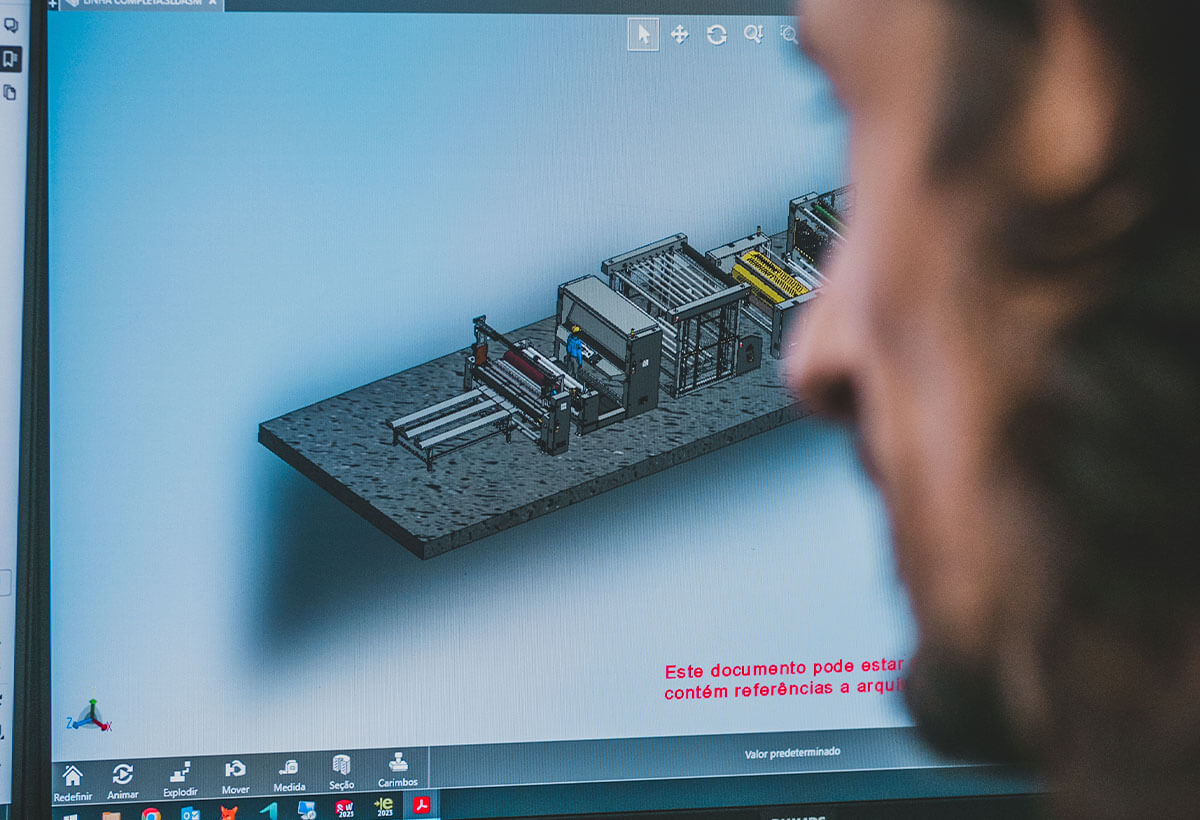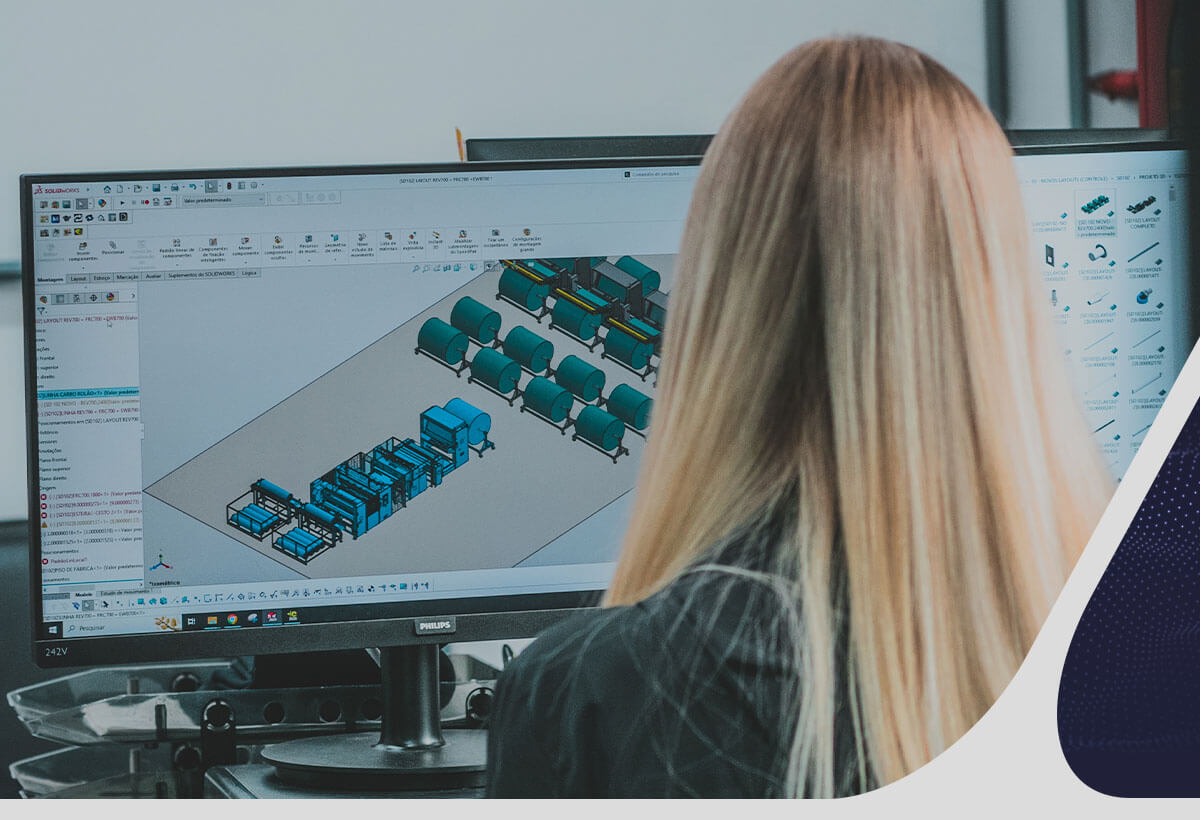Have you heard of advanced manufacturing? The term is closely linked to Industry 4.0, which is characterized by the automation and digitalization of production processes.
In this approach, production is remotely controlled through sensors and network-connected equipment, enabling greater efficiency, precision, and integration throughout the industrial chain.
While many believe this concept is far from being implemented, the reality is quite different. It’s already applicable and being tested in the market.
Want to learn more about this topic? Then keep reading!
What is Advanced Manufacturing?
Advanced manufacturing is essentially a production model that uses and connects Industry 4.0 technologies to make operations more efficient and automated.
In practice, an industry adopting advanced manufacturing will have smart assembly lines operating with minimal human intervention. Machines and products communicate in real time, executing tasks autonomously.
Systems also interact with each other regarding purchasing and inventory, automatically identifying when a material is running low and triggering restocking.
In addition, sensors constantly monitor the process and notify the supply chain to make on-demand deliveries, ensuring agility and efficiency, especially in the textile production line.
What Are Its Main Characteristics?
To be effective, advanced manufacturing must follow five basic principles, which define its core features:
1. Modularity
Modularity refers to the development of a flexible and adaptable production line. It’s built using independent modules that make it easier to meet ever-changing market demands.
2. Real-Time Operation
Real-time operation involves the immediate collection and use of data for smarter decision-making.
This enables improvements, optimization, and timely adjustments, preventing serious errors, downtime, and waste.
3. Decentralization
Decentralization means cyber-physical systems operate autonomously. They assess and make decisions during the production process without human assistance.
This allows for quick, efficient responses to various situations and conditions.
4. Virtualization
Virtualization refers to Digital Twins, a technology that creates a digital replica of the production system.
This allows for simulations that reduce costs and waste, and also supports employee training and system adaptation.
5. Service Orientation
Service orientation focuses on producing customized solutions, aligned with the new consumer profile that demands personalized products and experiences.
What Are the Benefits of Advanced Manufacturing?
Based on what we’ve discussed, here are several benefits of advanced manufacturing for the textile sector:
1. Mass Customization
Advanced manufacturing allows customers to design their own garments using technologies that enable mass customization.
This meets the expectations of various consumer profiles who want products in the right size and style.
2. Faster Production and Reduced Inventory
With advanced manufacturing, production becomes faster and more autonomous, saving time.
Because raw materials are restocked on-demand and products are made to order, inventory levels are significantly reduced.
3. Less Human Interference and Fewer Errors
Reduced human intervention leads to fewer production errors. As long as the system is running correctly, all items are manufactured consistently and with high quality.
4. Data-Driven Decision Making (Big Data)
All of this is possible thanks to Big Data, which enables insights into countless production scenarios.
Interpreting this data helps companies make smarter decisions, significantly boosting productivity.
Example of Advanced Manufacturing in Action

If advanced manufacturing still seems distant from your business, know that many companies are already adopting these technologies with concrete results.
A great example is Supertex Group, one of the largest textile conglomerates in Latin America, which implemented automation to improve its production processes.
With operations in Colombia and El Salvador, Supertex produces over 1.7 million garments per month for international brands.
To boost productivity, the company invested in automated equipment like Knit Relaxing Machines, which reduced material preparation time from 48 hours to just a few minutes.
This automation significantly shortened the time between fabric relaxation and cutting, while also reducing labor needs—freeing up workers for other tasks.
According to Daniel Herrera, Project Director at Supertex, the automated process also improved material quality.
Besides fabric preparation, advanced manufacturing is also used in other textile processes, such as:
- High-resolution digital printing.
- 3D printing of accessories and textile components.
- Automated machines for garment production, finishing, and weaving/knitting.
- Robotic arms for sewing, folding, assembling, and finishing.
- Smart inventory control with sensors and ERP-integrated systems.
- And much more!
What Is Advanced Manufacturing Technology?
Advanced manufacturing technology involves using digital systems and automation to make production smarter and more integrated.
It incorporates Industry 4.0 innovations, including:
- Internet of Things (IoT): Machines and sensors connected to the internet.
- Artificial Intelligence and Machine Learning: Systems that learn from data and make decisions.
- Advanced Robotics: Robots capable of executing complex tasks with precision.
- Big Data and Analytics: For process optimization.
- Additive Manufacturing (3D printing): Producing parts layer by layer.
- Cloud Computing: For remote data storage and system access.
The Importance of Advanced Manufacturing
Given these numbers, it’s clear that advanced manufacturing technologies are no longer just a trend, they’re a reality. Industry 4.0 is expected to grow by 21% by 2028, reaching USD 5.62 billion.
In other words, advanced manufacturing is a strategic pillar for industry growth in the global landscape. It’s essential for companies that want to stay relevant in the digital era, offering intelligent, sustainable processes with reduced costs, waste, and errors.
But don’t worry! Your factory doesn’t need to transform overnight. Investments can be made gradually, using equipment designed for Industry 4.0. As the first investments start to yield results, you can reinvest until full modernization is achieved.
Some examples of equipment from Delta Textile Solutions show this potential. The Relaxing Machine, for instance, reduces relaxation time from about 48 hours to just a few minutes.
The automated Inspection Machine brings speed and efficiency to quality control.
And that’s just the beginning. There are many other solutions available. It’s crucial to research textile technologies and choose those that best meet your industry’s specific needs.
Also, it’s essential to train your team to operate new equipment.
Keep in mind that organizational culture may be impacted, as technological changes often bring uncertainty. That’s why it’s important to focus on the long-term benefits these transformations can offer your company.
Keep Learning About the Topic!
As we’ve seen, advanced manufacturing is already a reality in the textile sector and is being embraced by companies looking to innovate, stand out, and meet the demands of an increasingly connected and demanding consumer.
To unlock the full potential of this transformation, it’s essential to strategically integrate technologies and artificial intelligence (AI) plays a key role in that process.
Download our complete guide on AI in the textile industry and learn how to apply these solutions to your business effectively and gradually.


